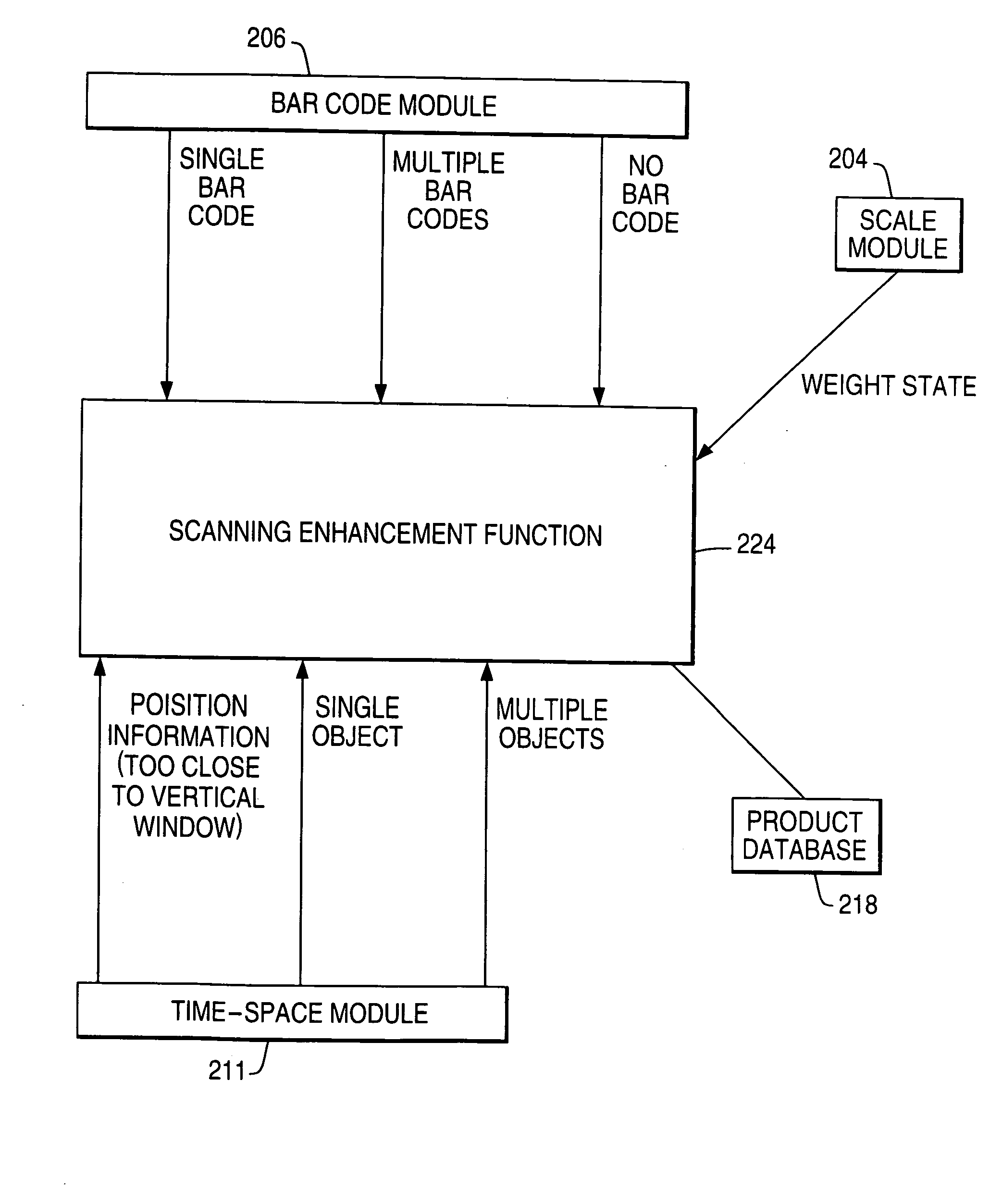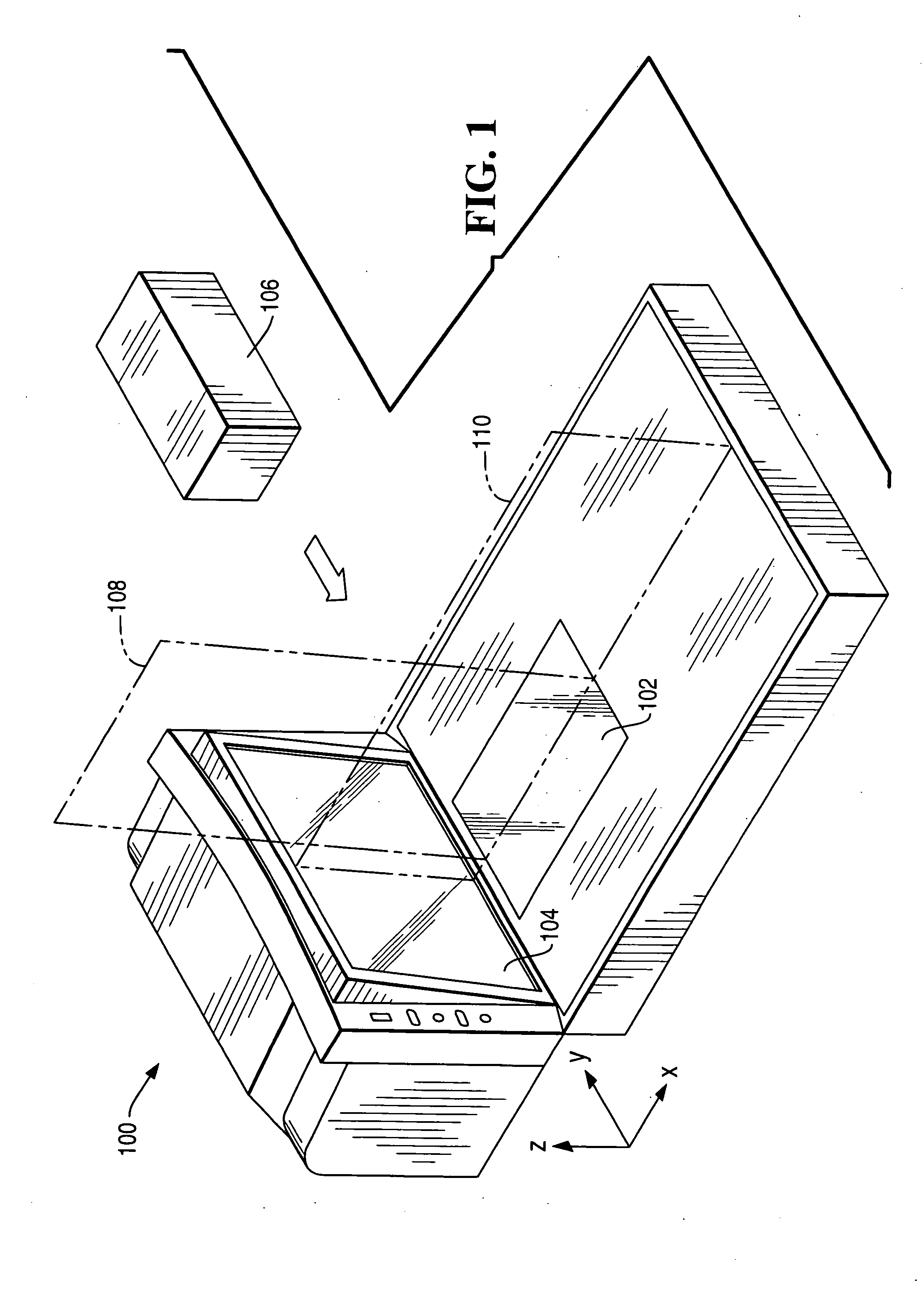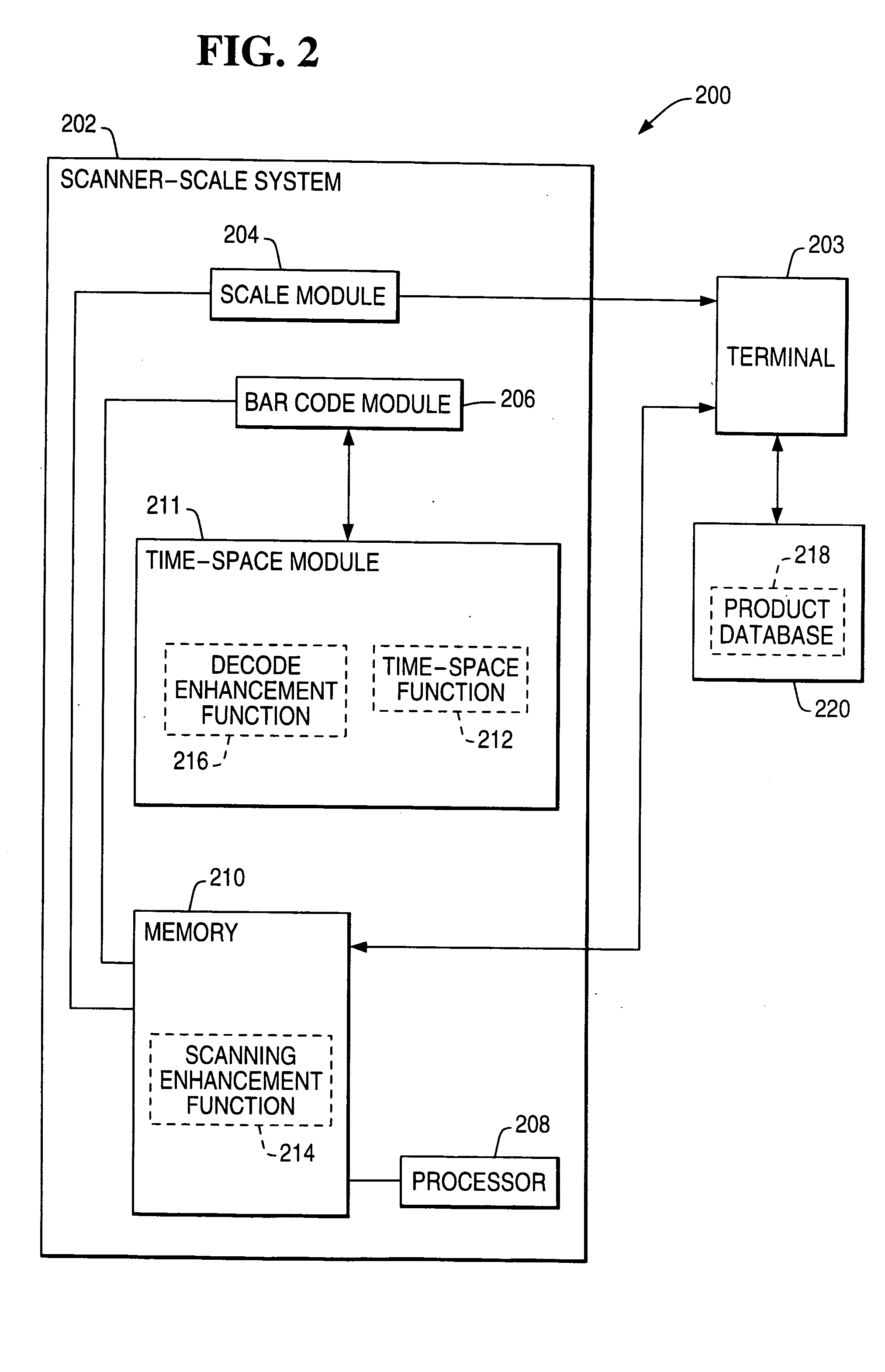Methods and apparatus for using imaging information to improve scanning accuracy in bar code scanners
a bar code scanner and imaging information technology, applied in the field of bar code scanners and bar code scanning, can solve the problems of missed scans, impaired scanning of some objects, and failure of bar code scanning,
- Summary
- Abstract
- Description
- Claims
- Application Information
AI Technical Summary
Benefits of technology
Problems solved by technology
Method used
Image
Examples
Embodiment Construction
[0015]FIG. 1 illustrates a scanner 100 having a horizontal scan window 102 and a vertical scan window 104, according to the present invention. The scanner 100 generates a scanner signal based on light reflected from an object passing within the field of view of one or both of the windows 102 and 104. In FIG. 1, the example of a box 106 being passed within range of the scan windows 102 and 104 is illustrated. In this illustration, the box 106 passes through a first scan plane 108 emitted from the horizontal scan window 102 and a second scan plane 110 emitted from the vertical scan window 104. Each of the scan planes 108 and 110 is produced by the tracing of a scan beam along a path determined by the rotation of a spinner within the scanner 100. As the box 106 passes within the field of view of the scanner windows 102 and 104, the box 106 intersects the scan planes 108 and 110, the box 106 simultaneously intersects both of the scan planes 102 and 104. During the time that the box 106 ...
PUM
 Login to View More
Login to View More Abstract
Description
Claims
Application Information
 Login to View More
Login to View More - R&D
- Intellectual Property
- Life Sciences
- Materials
- Tech Scout
- Unparalleled Data Quality
- Higher Quality Content
- 60% Fewer Hallucinations
Browse by: Latest US Patents, China's latest patents, Technical Efficacy Thesaurus, Application Domain, Technology Topic, Popular Technical Reports.
© 2025 PatSnap. All rights reserved.Legal|Privacy policy|Modern Slavery Act Transparency Statement|Sitemap|About US| Contact US: help@patsnap.com



